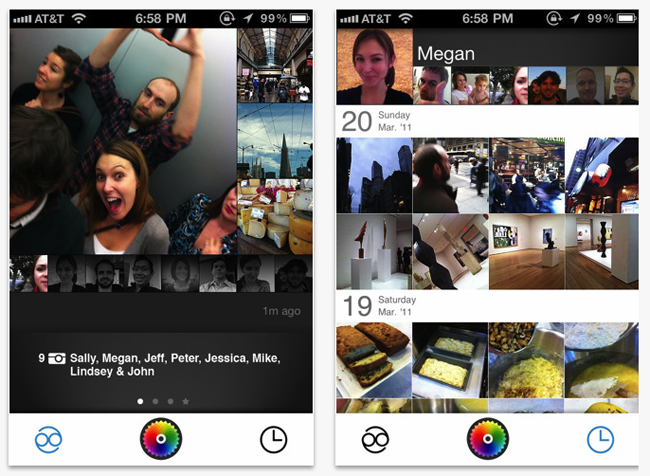
Brand new public photo-sharing app Color has the potential to be the coolest — or the most frightening — social media platform yet.
Launched Wednesday night for iPhone and Android, Color is the brainchild of Bill Nguyen, who sold his music-streaming company Lala to Apple in 2009 for $80 million. At first glance, Color might seem like a copycat of mobile apps like Instagram or PicPlz. But with a proximity-based sharing functionality, it holds far greater potential.
Color comes loaded with onion layers of features. On the first level, the app allows users to take pictures or videos with their smartphone, which are then uploaded to the Color app network. Pretty straightforward, right? OK — now is when Color gets wacky: Rather than share your picture or video content only with select friends or followers, your pictures and videos are automatically shared with any other Color users who are within 150 feet of where they were taken. That means any photos you take with Color are public, and can be seen by friend and stranger alike.
So, say you’re at a house party, and you take a picture of some friends playing beer pong using Color. Anyone else at the party using Color can see the picture you just took. In turn, you can view any pictures or video taken by other Color users at the party. Once you leave, however, your photos are no longer viewable in that photo stream.
Color does have a network feature, which allows you to see photos taken by those in your network at anytime (not just when you’re nearby each other). But rather than letting users choose who is and isn’t in their network, Color has an “elastic network,” which chooses who’s in and who’s out based on the Color users you’re around the most.
Every time two people use the app near each other, Color ranks their friendship. So the people you hang out with most appear higher up on your list of contacts. If you stop hanging out with someone, that person’s ranking goes down.
You don’t actually have to know the person for them to appear in your contacts. Simply using the app nearby another Color user a couple of times is enough to land that person on your radar. So if you’re hoping to meet a certain coworker or fellow student, Color could become your access point — and a good way to spark conversation.
Where Color promises to get crazy is at crowded public places, like concerts, bars, or places like New York City’s Times Square. In these instances, Color has the ability to create a new kind of augmented reality, one in which the world around you becomes viewable from countless angles through the “eyes” of complete strangers.
One of the wildest aspects of Color is its use of the phone’s technology: Color doesn’t simply use GPS to determine a user’s location. It also uses the camera to identify similar lighting, and the microphone to pick up ambient noise that can be used to more perfectly match a user’s current position.
All signs point to Color becoming the next big thing in mobile social media apps. The company just secured a whopping $41 million in funding, including $25 million from Sequoia Capital, — the most money the firm has ever invested in a pre-launch starup, including Google.
To download Color, simply go to Color.com (yes, they got that domain) to access the app on iTunes or in the Android Marketplace. You can also follow the company on the Twitter account @Color.
